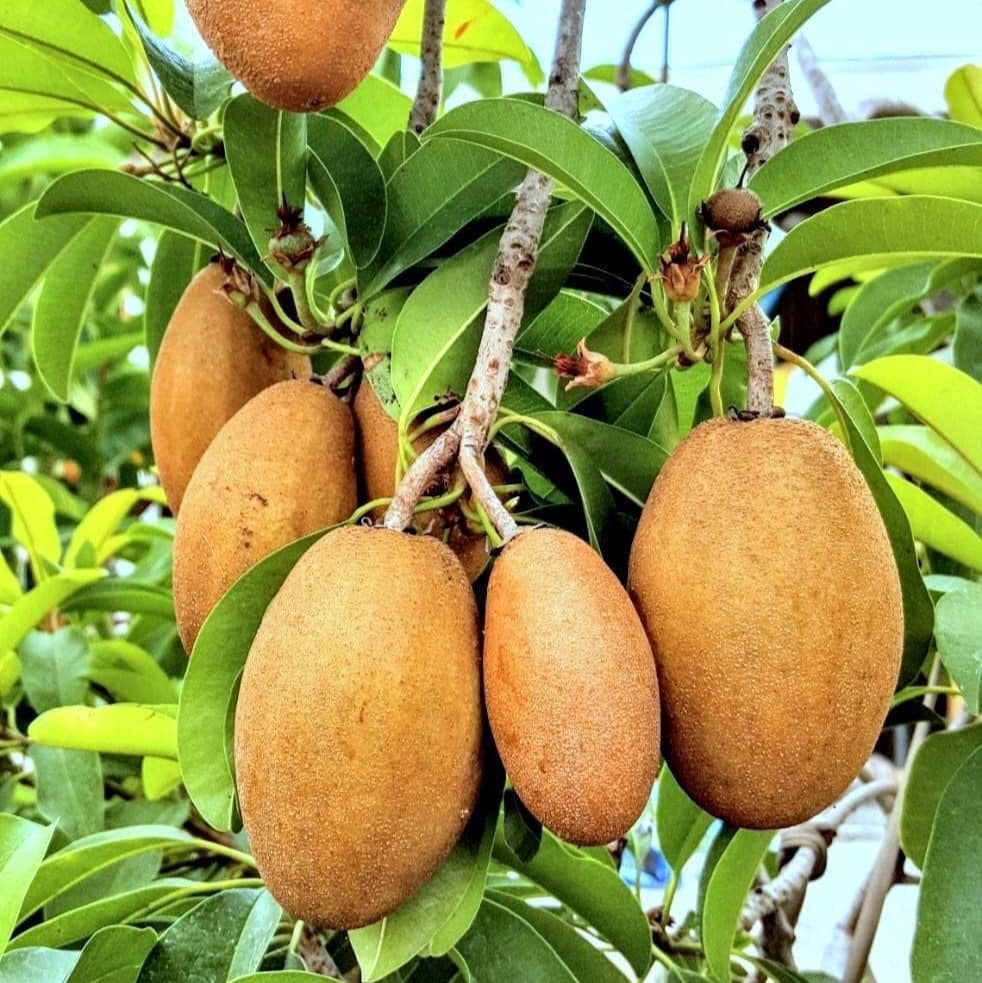Love it? Add to your wishlist
Your favorites, all in one place. Shop quickly and easily with the wishlist feature!
[message]
[title]
[message]



Veliyath Gardens
Couldn't load pickup availability
Known for its intense sweetness and malty richness, Banana Sapote is an underappreciated tropical delicacy that can elevate both your garden and your palate. A native of the American tropics, this exotic fruit, often referred to as Long Sapote, carries with it the charm of tropical abundance and the promise of delectable harvests. With its robust flavor, aromatic appeal, and fairly simple cultivation needs, the Banana Sapote tree makes for an ideal addition to any fruit lover’s collection.
Common Name: Banana Sapote, Long Sapote
Botanical Name: Pouteria sp. (exact species under debate)
Other Local Names:
In Costa Rica: Zapote Banano
In Panama: Mameyillo Largo
In parts of Mexico: Plátano Sapote
The fruit of Banana Sapote is long and slender, covered in a light to deep brown skin.
Inside lies a smooth, grainy-textured flesh that tastes like a blend of banana, malt, and sweet caramel.
Its natural sweetness and soft consistency make it ideal for eating fresh or blending into smoothies, milkshakes, puddings, and ice cream.
It is often used in traditional sweets and desserts in Latin America, giving a unique twist to local confections.
The fragrance of Banana Sapote is distinctive and intoxicating – sweet, slightly fermented, and deeply tropical.
The flavor is widely described as a malty banana custard, with subtle hints of brown sugar.
It is a comforting fruit, with richness that makes it suitable for pairing with both creamy and spiced dishes.
Banana Sapote is not just a sensory delight; it is also nutritionally beneficial.
Rich in Dietary Fiber: Aids digestion and supports gut health.
Loaded with Natural Sugars: Provides a quick and healthy source of energy.
Contains Essential Vitamins: Especially Vitamin A, Vitamin C, and B-complex vitamins that support skin health, immunity, and metabolic function.
Packed with Minerals: Potassium, iron, calcium, and magnesium help with heart health and muscle function.
Antioxidant Properties: Supports cellular health and reduces oxidative stress.
In tropical America, Banana Sapote is often grown in home gardens and used in traditional celebratory dishes.
The fruit is sometimes fermented into drinks or used in folk remedies for treating fatigue and indigestion.
Farmers traditionally value it not only for its fruit but also for its adaptability and resilience in various soil types.
Banana Sapote trees grow moderately fast and are typically medium in height, ranging from 10 to 20 feet.
The plant thrives in warm, humid climates and flourishes when planted in well-drained, loamy soil.
Leaves are evergreen, glossy, and lance-shaped, contributing to the tree’s ornamental value.
Sunlight: Requires full sun exposure for optimal growth and fruit production.
Watering: Needs consistent moisture, especially during flowering and fruiting seasons; avoid waterlogging.
Soil: Prefers rich, loamy soil with good drainage; slightly acidic to neutral pH is ideal.
Fertilization: A balanced fertilizer with a slight boost in potassium supports healthy fruit development.
Pruning: Light pruning is necessary to shape the plant, remove diseased wood, and promote airflow.
Pest Resistance: Naturally hardy, though occasional organic treatments may be needed for pests like scale or mealybugs.
The tree typically begins to flower within 18 to 24 months after planting.
Fruits mature and ripen around 3 to 4 months after flowering.
A mature tree can yield generously, rewarding the grower with abundant harvests seasonally.
Fruits should be harvested when the skin softens and changes from greenish to brown.
Handle gently to avoid bruising due to the fruit's delicate interior.
Banana Sapote has a short shelf life once fully ripe, so it's best consumed fresh or preserved quickly.
Can be stored in refrigeration for a few days or converted into jams, frozen pulp, or dried fruit leather for extended use.
Make it a daily breakfast booster in smoothies or yogurt bowls.
Blend it into creamy desserts or use it as a natural sweetener for baked goods.
Eat it fresh after meals as a nourishing and satisfying tropical dessert.
For health-conscious individuals, it serves as a natural energy snack, replacing processed sugars.
At Veliyath Gardens, we believe that rare fruit trees should bring both joy and wellness. The Banana Sapote tree is a fitting symbol of that philosophy – it’s exotic yet practical, luscious yet nutritious. Whether you're a home gardener seeking new tastes or a farmer aiming to diversify your orchard, this tree offers great returns in flavor, nutrition, and satisfaction.
Our carefully nurtured saplings are ready for planting, and we guide you through every step of its care. Embrace a fruit that’s cherished across borders, yet beautifully suited to Indian tropical conditions.
If you’ve been searching for a fruit that offers indulgent sweetness, healthful benefits, and a touch of tropical magic, the Banana Sapote (Long Sapote) is your answer. Cultivate this rewarding tree in your garden and enjoy the abundance it brings – in harvest, in taste, and in life.
Let your journey into rare fruits begin here, with Veliyath Gardens – where passion for plants meets the joy of discovery.
Sunlight: Requires full sun exposure for optimal growth and fruit production.
Watering: Needs consistent moisture, especially during flowering and fruiting seasons; avoid waterlogging.
Soil: Prefers rich, loamy soil with good drainage; slightly acidic to neutral pH is ideal.
Rich in Dietary Fiber: Aids digestion and supports gut health.
Loaded with Natural Sugars: Provides a quick and healthy source of energy.
Contains Essential Vitamins: Especially Vitamin A, Vitamin C, and B-complex vitamins that support skin health, immunity, and metabolic function.
Make it a daily breakfast booster in smoothies or yogurt bowls.
Blend it into creamy desserts or use it as a natural sweetener for baked goods.
Eat it fresh after meals as a nourishing and satisfying tropical dessert.




